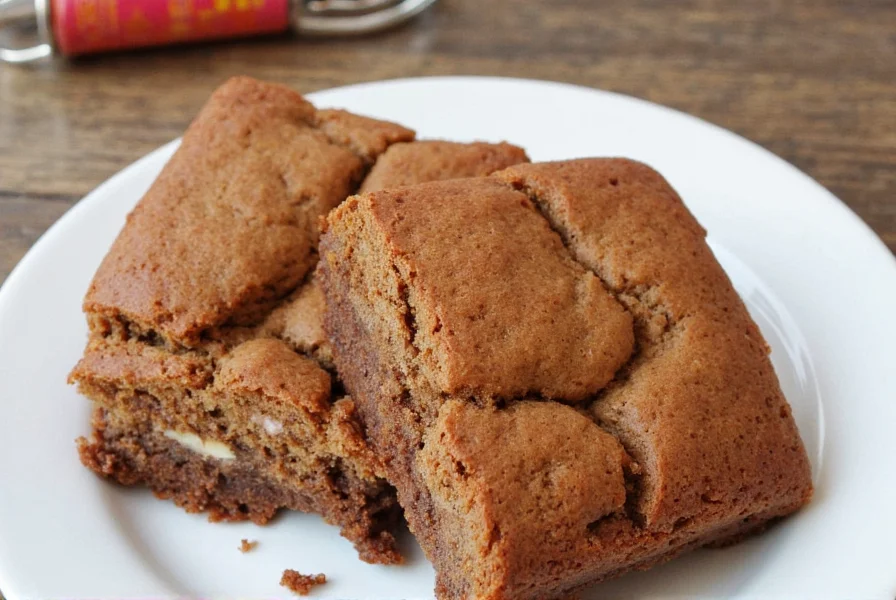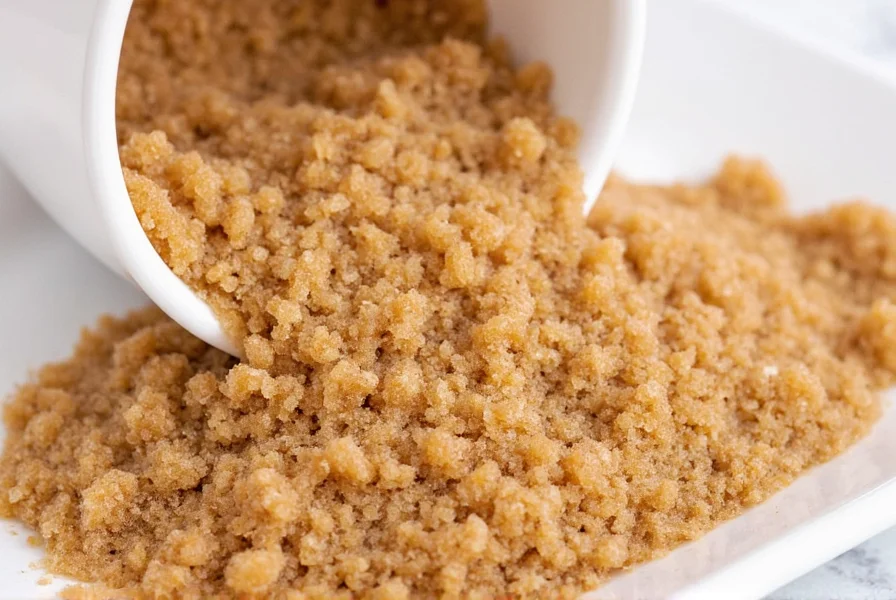Table of Contents
Brown sugar is a versatile ingredient used in countless recipes, from chewy cookies and moist cakes to savory barbecue sauces and spiced beverages. Its molasses content provides unique moisture, depth, and caramel flavor that white sugar can't replicate. This guide covers everything you need to know about using brown sugar effectively in your kitchen.
What is Brown Sugar?
Brown sugar is refined white sugar with molasses added back in. The molasses content determines its color and flavor intensity: light brown sugar contains about 3.5% molasses for mild sweetness, while dark brown sugar has 6.5% for richer, more complex flavor. Unlike white sugar, brown sugar retains moisture, making it ideal for recipes where texture and depth matter.
Historical Evolution & Production Shifts
Modern brown sugar differs significantly from historical versions due to industrial processing changes:
- Pre-1800s: Naturally occurring during primitive sugarcane processing with variable molasses content (Source: The Sugar Association)
- 1800-1900: White sugar refinement became dominant; brown sugar emerged as a manufactured product by adding molasses back to refined crystals (Source: The Sugar Association)
- Post-1950: Standardized molasses percentages (3.5% light / 6.5% dark) established for consistent commercial production
Types of Brown Sugar
Understanding the differences between brown sugar varieties helps you choose the right one for your recipe:
| Type | Molasses Content | Best For | Flavor Profile |
|---|---|---|---|
| Light Brown Sugar | 3.5% | Cookies, cakes, general baking | Mild, caramel-like sweetness |
| Dark Brown Sugar | 6.5% | Barbecue sauces, gingerbread, glazes | Rich, robust, slightly bitter |
| Raw Cane Sugar | Natural (unrefined) | Specialty drinks, gourmet desserts | Smooth, complex, earthy notes |

How to Use Brown Sugar in Cooking & Baking
Here’s how to maximize brown sugar’s unique properties in your recipes:
- Baked Goods: Adds moisture and chewiness to cookies (especially chocolate chip), creates tender crumb in cakes, and enhances flavor in brownies. For cookies, use dark brown sugar for deeper flavor; light brown sugar works better in delicate pastries.
- Savory Applications: Balances acidity in barbecue sauces (2-3 tbsp per cup of sauce), adds caramelization to roasted vegetables, and creates depth in chili or stew recipes.
- Drinks: Dissolves easily in hot liquids for spiced coffee syrups, cocktail sweeteners, or homemade ginger beer. Mix 1:1 with water for a quick simple syrup.
- Specialty Uses: Makes caramel sauce with smooth texture, creates crispy crust on baked ham, and adds richness to oatmeal or yogurt toppings.

Practical Tips for Using Brown Sugar
- Softening Hardened Sugar: Place in a sealed container with a damp paper towel or apple slice for 24 hours. For quick softening, microwave with a damp towel for 15-20 seconds.
- Measuring Accurately: Pack firmly into measuring cups using a spoon to avoid air pockets. For precise recipes, use a kitchen scale (1 cup = 220g).
- Storage: Keep in airtight container with a silica gel packet to maintain moisture. Never refrigerate—cold temperatures accelerate hardening.
- Substituting: For every cup of white sugar, replace with 1 cup brown sugar + 1-2 tbsp molasses. For recipes needing white sugar’s dry texture (like meringues), avoid substitution.
Key Context Boundaries & Limitations
Recognize these critical constraints for optimal results:
- Temperature Sensitivity: Burns 25°F lower than white sugar during caramelization; reduce heat settings for sauces (Source: Serious Eats Food Lab)
- Structural Limitations: Avoid in foam-based recipes (meringues, soufflés) where moisture prevents proper aeration (Source: King Arthur Baking Company)
- Flavor Dominance: Molasses overpowers delicate applications like vanilla custards or clear fruit glazes; use white sugar instead
Choosing the Right Brown Sugar
When selecting brown sugar, focus on these key factors:
- Moisture Content: High-quality brown sugar should feel soft and clump slightly. Avoid dry, crumbly sugar that indicates moisture loss.
- Molasses Percentage: Light brown (3.5%) for mild sweetness, dark brown (6.5%) for robust flavor, raw cane for natural complexity.
- Brand Transparency: Look for brands that disclose processing methods. Organic options avoid chemical refining but may have stronger molasses flavor.
Frequently Asked Questions
What is the difference between brown sugar and white sugar?
Brown sugar is white sugar with molasses added back in. This gives it moisture, color, and a caramel-like flavor. White sugar is pure sucrose crystals with no molasses, resulting in drier texture and cleaner sweetness.
Why does brown sugar harden over time?
Brown sugar hardens when moisture evaporates. The molasses naturally contains water, but exposure to air causes evaporation. Store in airtight containers with moisture-retaining items like apple slices or terra cotta sugar savers.
Can I substitute brown sugar with white sugar?
Yes, but it will change texture and flavor. Brown sugar adds moisture and depth; white sugar creates crispier textures and cleaner sweetness. For substitution, add 1-2 tbsp molasses per cup of white sugar to mimic brown sugar properties.
Which brown sugar is best for cookies?
Dark brown sugar creates chewier, richer cookies with deeper caramel notes. Light brown sugar works better for delicate cookies where you want sweetness without overpowering flavor. For classic chocolate chip cookies, dark brown sugar is preferred by most bakers.
How long does brown sugar last?
When stored properly in airtight containers, brown sugar lasts indefinitely. While it doesn’t expire, it can harden if exposed to air. Discard only if mold appears (extremely rare) or develops off odors.










 浙公网安备
33010002000092号
浙公网安备
33010002000092号 浙B2-20120091-4
浙B2-20120091-4